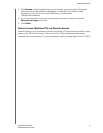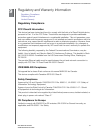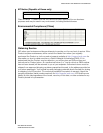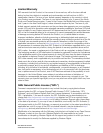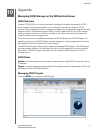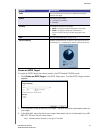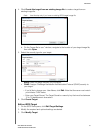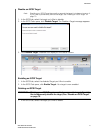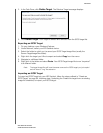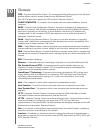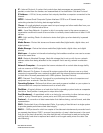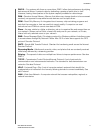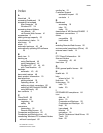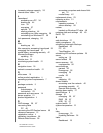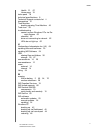
9
10
GLOSSARY
72
WD SENTINEL DX4000
ADMINISTRATOR’S GUIDE
Glossary
CIFS—Common Internet File System. The recommended file sharing protocol for Windows
platform allows users to access shares through My Network Places.
Mac OS X or later also supports the CIFS protocol. See also Protocol.
CLIENT COMPUTER—A computer that accesses services made available by a server
computer.
DHCP—Dynamic Host Configuration Protocol. A protocol for assigning IP addresses to
devices on a network. With dynamic addressing, a device can have a different IP address
each time it connects to the network. In some systems, the device's IP address even
changes while it is still connected. DHCP also supports a mix of static and dynamic IP
addresses. See also Protocol.
DLNA—Digital Living Network Alliance. The group of consumer electronics, computing
industry, and mobile device companies that sets standards for product compatibility, thus
enabling users to share content in their home.
DMA— Digital Media Adapter. A device that gives home entertainment devices the ability to
transfer media such as music, photos, videos to and from other devices over the network.
DNS—Domain Name Service. A system that allows a network name server to translate text
host names into numeric IP addresses used to uniquely identify any device connected to the
Internet.
ESD—Electrostatic discharge.
Ethernet—A standard method of connecting computers to a Local Area Network (LAN).
File Transfer Protocol (FTP)—A network protocol used to transfer data from one
computer to another through a network. FTP is a popular choice for exchanging files
independent of the operating systems involved.
GreenPower™ Technology—Engineering technology developed by WD to bring more
energy-efficient hard drive options to our customers. WD hard drives with GreenPower
technology yield average power savings of 4-5 watts over competitors' drives while
maintaining solid performance.
Host—The computer to which other computers and peripherals connect.
Host Interface—The point at which a host and a drive are connected to each other.
Host Transfer Rate—The speed at which a host computer can transfer data across an
interface.
HTTP—Hypertext Transfer Protocol. Protocol used by the World Wide Web to transfer
information between servers and browsers. See also Protocol.
HTTPS—Hypertext Transfer Protocol over Secure Socket Layer. A protocol that provides a
more secure means of configuring your device than HTTP, but may affect the
responsiveness of the user interface. All traffic between the managing computer and the WD
Sentinel server is encrypted. See also Protocol.
Hub—In a network, a device joining communication lines at a central location, providing a
common connection to all devices on the network.
Interface—A hardware or software protocol to manage the exchange of data between a
device and a computer; the most common ones are EIDE (also known as PATA), SATA, and
SCSI. See also Protocol.



